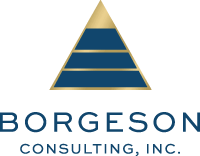Entrepreneur Focuses on Business Strategy
Keith is the co-owner of a 12-year-old consulting firm. He came to coaching to focus on business strategy. The company did quite well for a number of years, and then business slowed down one year, as many potential client companies dropped their systems projects for a later date. While both Keith and his business partner learned sales strategies and networking over the years, they recognized they were “techies” at heart and that business strategy was not their strong suit. They hired someone to handle that aspect of their business, but it did not work out. Keith’s business partner said he preferred to manage projects, which left Keith to handle the business strategy. I was also informed they were looking at selling the business some time in the next eight years.
Goals
Keith needed to be the strategist for his company. He also needed to become a “futuristic thinker”, which is different from his natural preference. Since they wanted to sell the business long before their retirement (and make good money in the sale), they need to start plotting out everything that needed to be in place in order to sell.
When we started coaching, 80% of their annual revenue was coming from two clients. We set a goal (for about 18 months out) that all clients would make up no more than 20% of annual revenue. Also, Keith’s time was being pulled away from business strategy activities. He figured about 75% of his time was spent on current projects, leaving only 25% for strategizing. We set a goal to change that to a 50/50 ratio in about 3 months.
Coaching Experience
I worked with Keith to get him to think more like an entrepreneur, less like a technician, and a little less like a manager than he had been. I gave him exercises to build the “business muscles” that had not been used much, especially those that would get him to more easily think long-term.
We discussed his current networking and prospecting connections to determine how he should focus his time - cultivating each in order to yield the best long-term results.
I also started Keith on a program to “get his ducks in a row” for selling the business. This gave him things to do (his strong suit) to gather information, plus a place to put the information in order to look at it “from 10,000 feet” and determine a plan of action.
Results
Keith is focused on spending more time on business strategy. He is still the guy who “puts out the fires”, but he expected less of that to occur in the short-term.
He planned to meet with strategic partners weekly who could bring his company into new projects at new customers. Earlier in the year, he brought a large company into one of his clients, and now he is leveraging the relationship for that partner to do the same for his company.
Keith continues to gather information to prepare the business for sale. We have brainstormed some non-traditional ideas for how they might consider attracting a buyer in a few years and how to make that happen.
Post Script
Originally, Keith and his business partner felt that their particular technology niche would only be purchased by large companies. While the type of technology deliverable was in its early stage, usually only large companies found it financially feasible to pursue, as the initial cash outlay was high (even though huge cost savings are incurred down the road with the particular technology).
However, by strategizing and working on future thinking, they found a way to make the technology attainable for mid-sized companies. They developed a marketing plan to reach executives at mid-size companies and created an assessment tool that could be used to determine if the technology and future cost savings would work well for any particular prospect/company.
This strategic thinking and planning created a new customer base for them that, before, had not been imagined.
